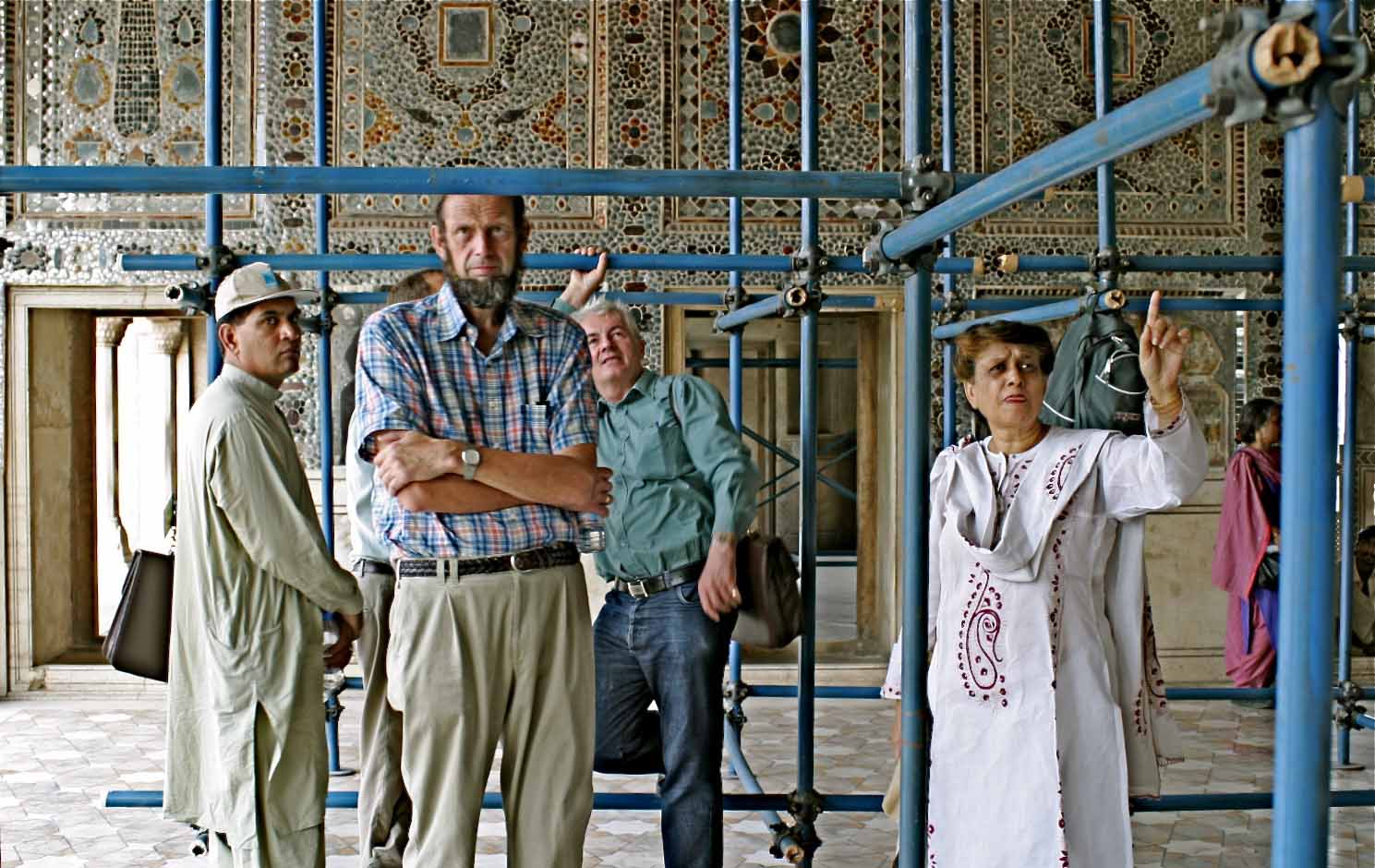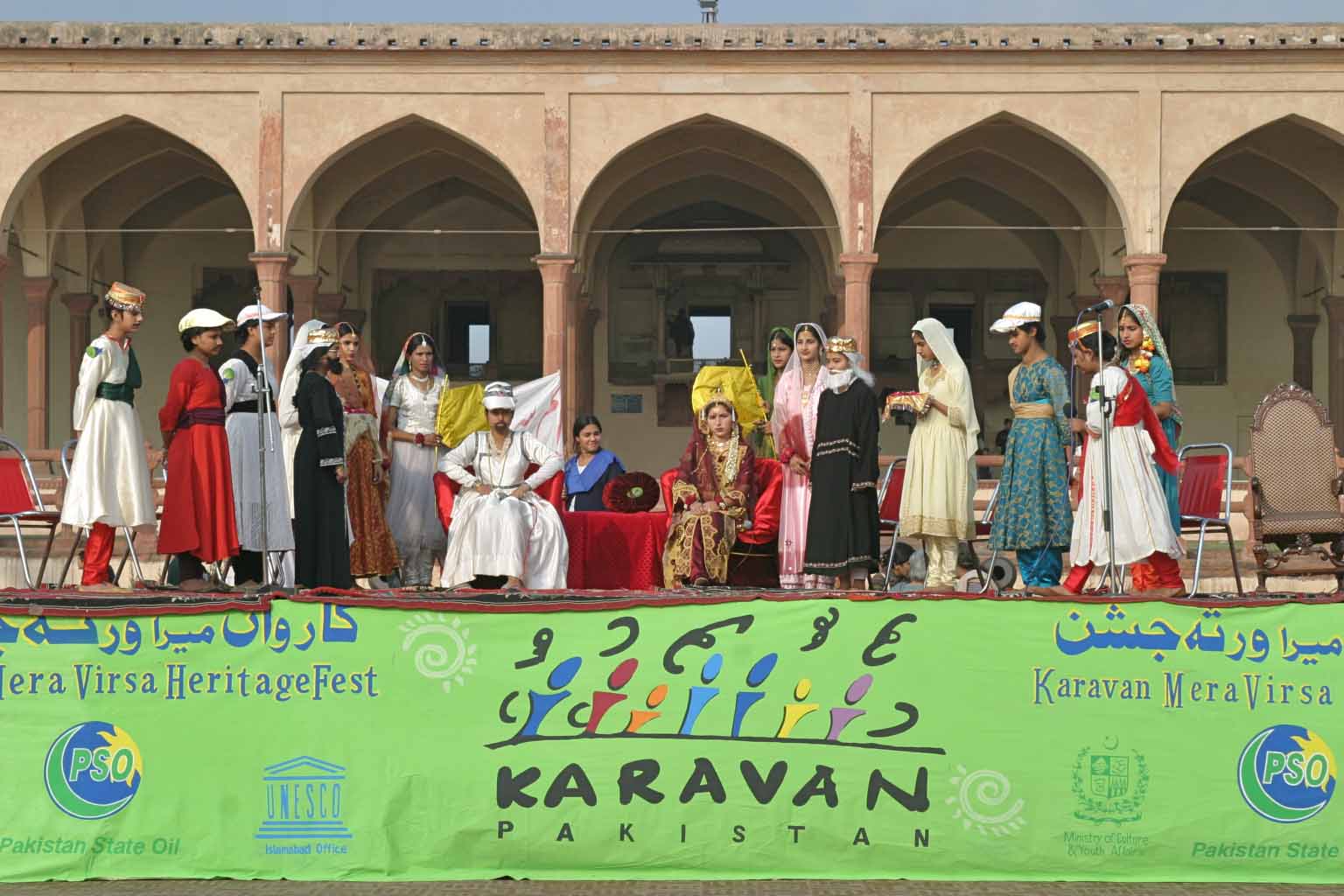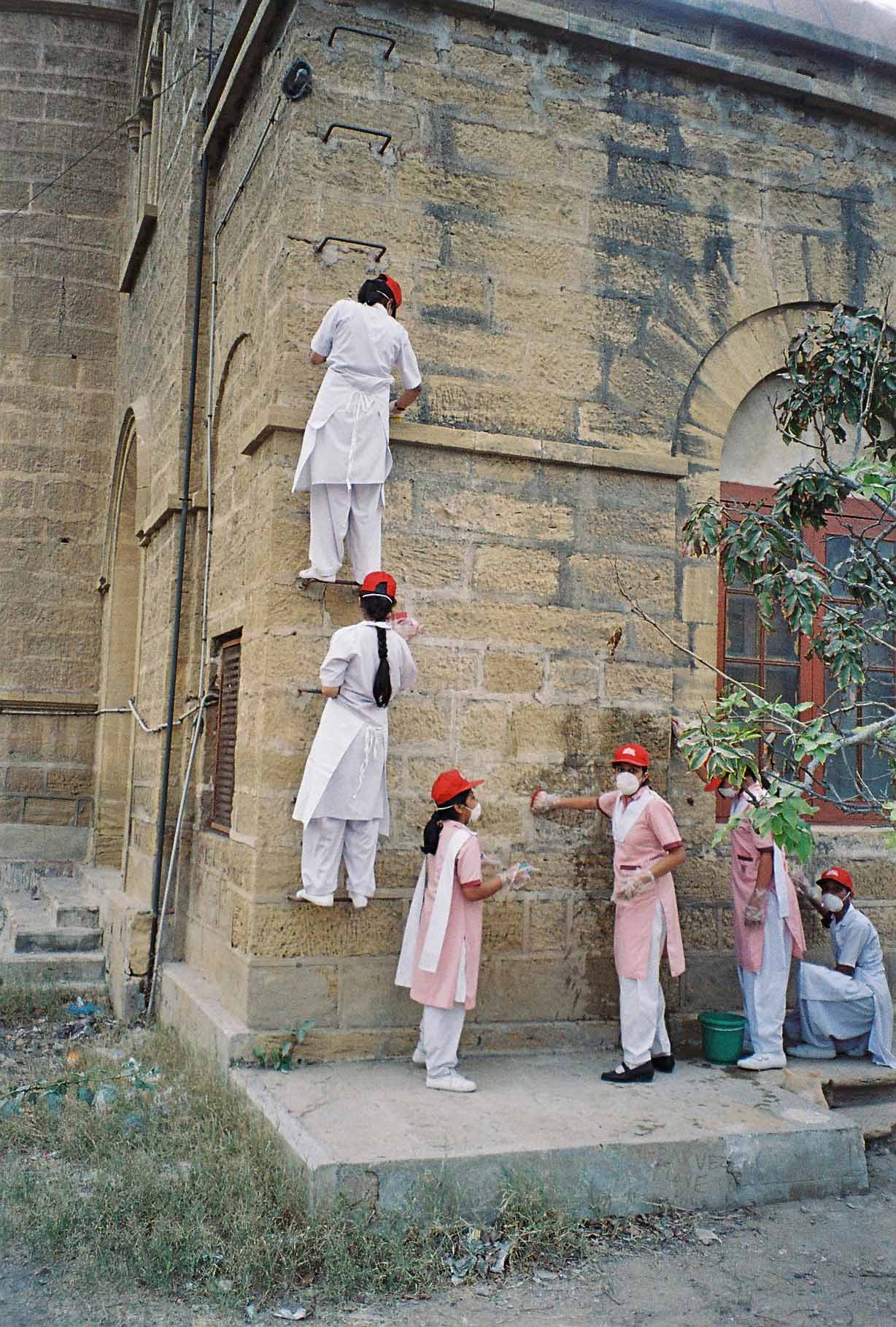Heritage
The next step after documenting the slums was to record the built environment, especially the urban heritage, which the commercial interests were out to destroy. She was the first to start documenting and preserving the heritage of Pakistan. This involved making an inventory and taking photographs, which we did on weekends and holidays. At that time the CDA chairman, Syed Ali Nawaz Gardezi, was going to a conference of Muslim mayors in Morocco. He asked us to create a ‘Society for the Preservation of Muslim Heritage’ so that he could look for funding at the conference, to save old towns and cities of Pakistan, but nothing came of it. We continued to document heritage with our own resources. My wife took up the case of buildings, which were under immediate threat. The GPO on Mall Road Lahore had caught fire and was slated for demolition. She took to preserve and restore it. In Karachi two major buildings were under threat. One was the Hindu Gymkhana and the other was Flagstaff House. The latter had been bought by the Quaid-i-Azam, who lived in Governor’s House as governor-general but had moved his personal belongings from India to Flagstaff House, which he visited with his sister on Sundays to sort them out. However Ardeshir Cowasjee, backed by Jamil Nishtar who was head of the National Bank of Pakistan, wanted to demolish it and build a shopping mall in its place. As a childhood friend of Mehmoud Haroon, Ardeshir used his influence to write articles in Dawn attacking my wife for saving it. And the All Pakistan Newspapers Society run by Hameed Haroon wanted to build their offices on the site of the Hindu Gymkhana. Once again my wife approached the president, who agreed not to allow anyone to demolish it. The minister concerned, Elahi Bux Soomro, took him on a night visit to the Hindu Gymkhana to convince him to give it away, but the president remained unmoved. Hameed Haroon invited President Zia to the annual function of APNS to ask for the Hindu Gymkhana, but he declined by saying that he would present it to him as a wedding gift - knowing that he was not going to marry. It is a great pity that old residents of Sindh and Karachi did not wake up to save their heritage, and allowed most of the major old street corner buildings like the Palace Hotel, Admiral ‘s House, etc. to vanish from Karachi.
My wife agreed to become a member of General Zia’s Majlis-e-Shura (parliament), so that she could get him to save the heritage and to get him to promulgate a law to eliminate unqualified architects and planners, who had continued to receive licences to practice from irresponsible civil servants. President Zia told her, “There was a lot of opposition by engineers in my cabinet but I kept my promise to you..” There were three engineers in the cabinet including Elahi Bakhsh Soomro, who was also chairman of the Engineering Council of Pakistan.
She became the first chairperson of the Pakistan Council of Architects and Town Planners to implement the act. This turned her colleagues against her, because she refused to register anyone unless they produced their original certificate of qualifications, and she got them verified by their respective institutions, which exposed the degrees of many of them as fake. Therefore she created a separate category of unregistered but licensed architects and town planners for them so that their livelihood was not affected.
Despite that, a powerful lobby was now arrayed against her, comprised of speculators who had been denied the chance of grabbing the land of jhuggi dwellers and heritage buildings, joined by spurious architecture and planning degree holders and their patrons running the KDA. It is a pity that a number of qualified architects were forced to join them, because they were dependent on the KDA to approve their plans to enable them to practise their profession and earn their living. They started a campaign of bogus letters by creating an organization of fake degree holders called the Federation of Architects and Town Planners, and took out a weekly Urdu journal called Roshan Pakistan with articles against her on the front page of every issue. This made the military secretary of the president tell my wife that she must be doing a lot of good, since so many complaints were being received against her, which they placed in a sack and forgot about them.
My brother took us to the best lawyer of the day, Khalid Ishaq, who advised us against filing a case as he said that it would be a waste of time, because at the end of the day we would find that they had been using bogus names, and their weekly had no assets or property in its name. Khalid Ishaque had a wonderful library with thousands of books in it. He had the reputation of buying all the books, which came into the market on his chosen subjects, which was also a clever way of easing his tax burden. Khalid Saheb had liked my book on Sindh and presented me with books published in India on Arab rule in Sindh.
This made us create the Heritage Foundation to broaden support, and this was the first organization that began systematic cataloguing and working on saving historic urban structures. And due to my wife’s efforts the Sindh Cultural Heritage (Preservation) Act 1994, proposed by her, was unanimously passed by the Sindh Assembly. Thereby about 600 buildings documented by her in Karachi were preserved, and a committee was formed to implement the law and to document and protect more buildings. But Abdul Hamid Akhund, secretary to the governor and the culture secretary of the Government of Sindh, and his best friend, Hameed Haroon, nephew of the governor, got themselves nominated onto the committee, and did their best to defeat the act by not implementing its purpose which was, to document and preserve the heritage of the whole of Sindh. Akhund used to say that Yasmeen Lari had got the Heritage Act passed with a gun at his head. By that what he meant was that despite being the blue eyed boy of governor Mehmood Haroon and soul mate of Hameed Haroon, he was helpless before the support she had of Prime Minister Benazir Bhutto, Chief Minister Abdullah Shah and opposition leader Bhopali in the Sindh Assembly.
After the change of government they maneuvered themselves into a position to misuse and destroy heritage. Therefore, to stop them from de-notifying heritage buildings for creating shopping plazas, Mrs. Lari created Karavan Karachi to generate public awareness and support for heritage. Karavan Karachi met every Sunday at a heritage building where school bands would start playing in the afternoon to attract people. With thousands of people watching, the chief guest would place a plaque on the heritage building, followed by speeches, plays, skits, and music shows relating to heritage offered by schools and theatre groups.
She also devised the Karavan Mera Pakistan programme, to safeguard historic buildings, to foster a duty of care for heritage assets, to develop pride and a stake in the city by initiating a sustained process of cleaning and washing Karachi's heritage. This was done by involving school children and by white washing posters from walls and replacing them with paintings by students. These functions were held in Karachi from 2001-2004, followed by several other cities and ranging from the Bahawlpur Palaces, Darawar Fort and the World Heritage Sites of Lahore's Shahi Qila and Taxila. Mrs. Shanaz Ramzi acted as the chairperson of the Karavan Events Committee. Arif Bahalim, Shaiyanne and Sohail Malik organised theatre, plays and shows. Afroza Bhamani organised schools. Hamir Soomro provided the plaques. The British Council, OUP and the Tourism Department joined the board, while there were innumerable others, all volunteers who were there to help at a call every Sunday. The British Council representative in Karachi filmed every event and received award from the British Government, as did the OUP head. The Governor of Sindh, Mohd Mian Soomro was also a great help and graciously opened up the Governor’s House grounds for certificate giving ceremonies to thousands of school children who had participated in the KaravanKarachi events.
When one of the most important heritage sites in Pakistan, that is the Shish Mahal of Lahore Fort, was endangered, the Heritage Foundation chief Yasmeen Lari was appointed National Advisor for conservation and preservation of Lahore Fort by UNESCO, and was asked by UNESCO to lead the team to save it.
She also took Karavan to Lahore and got students of Lahore schools and colleges involved in cleaning the fort, mural painting, staging of original plays and skits relating to the history of Shahi Qila, culminating at the end of the year in a reception held by the Governor of Punjab at the Punjab Governor's House, and distribution of certificates and prizes for the best performances and murals by school children.
Mrs. Lari also had drawings of the historic monuments of Lahore prepared, while I photographed all the monuments as well as the mazaars of the Sufi saints of that city. Yasmeen wrote a guide book on historic Lahore, and a book on Punjab Governor’s House. From there she branched out to Bahawalpur and Taxila, where local schools and colleges were involved in cleaning and taking care of their heritage. The documentation of Peshawar city was also taken up in collaboration with UNESCO and a publication on Peshawar city was brought out. UNESCO also appointed her to co-author the Master Plan of Lahore Fort, which identified problem areas and worked out strategies for the management of the entire World Heritage Site.
The Heritage Foundation received the UN Recognition Award 2002 for promotion of culture and peace. UNESCO also devoted a chapter to Yasmeen Lari as one of sixty women from all over the world who had made a significant contribution to UNESCO since its inception.
Our plan to do a number of other books on Lahore remained confined to our computers, as an earthquake devastated northern Pakistan on 8 October 2005, and Yasmeen moved to the Siran Valley that cold winter to help people build earthquake resistant houses. I also visited the valley and mountains where the tremours were still taking place, dislodging huge rocks, which roared down the mountain, and created huge clouds of dust, making people run around in fright, while I froze.


